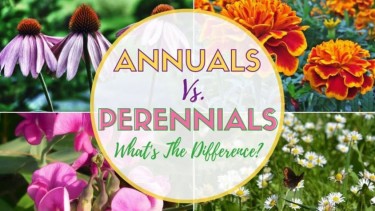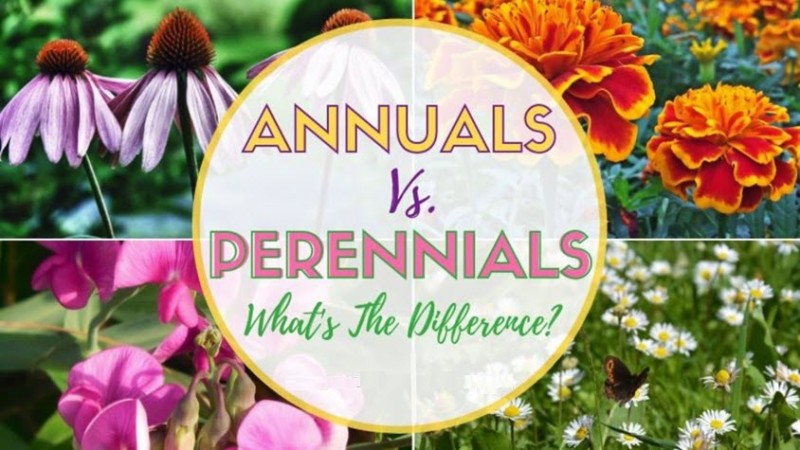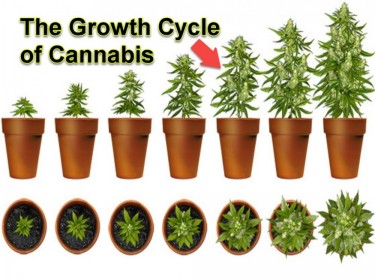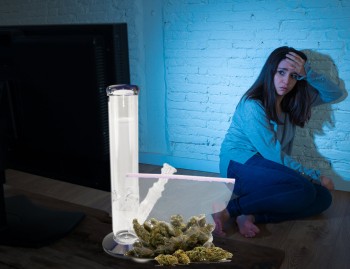What is the Difference Between Annual vs. Perennial Plants?

If you are set to start growing your cannabis plant or even if you want to buy some plants, you must have heard the terms “Annual” and “Perennial” more than once. Now you wonder what the words mean and think if you can plant both types, or is it possible that one is better than the other?
Aside from knowing these terms because they are essential within the planting industry, you also need to understand them for effective cannabis plant control.
The life cycle of the plant is all about seasonal patterns of reproduction and growth. For instance, a yearly life cycle refers to plants that move from seed to seed in a single growing season or one year. The perennial life cycle means that the cannabis plant grows again season after season.
There are good annual flowers and good perennial flowers that you can plant and groom in any garden. There are also peculiar features that explain the distinction between these life cycles, and we will discuss all of that and more in this article.
The differences between annual and perennial
The simple answer to the question is that annual plants do not regrow while perennial plants regrow. The plants and flowers and die in one planting season are referred to as annuals even though many of them drop seeds you can collect and plant to grow in spring.
Annuals also bloom throughout the season until winter, which means you get relatively consistent showy and colorful blooms. An additional advantage for annual is that the plants can get into the ground at any time, even in midsummer, which refreshes your beds.
On the other hand, perennials can come back for additional seasons. Although the top part of the perennial will die in winter, you will soon see new growth the following spring from the same roots. These changes make the planting process more accessible, but it also has its drawbacks.
Perennials always seem to have subdued flowers that are not so flashy, and they bloom for a short while (it is always from 2-6 weeks). Perennials also do better when planted in fall or during spring but no later than six weeks before the ground becomes frosty. In most countries, the environment becomes cold from mid-November. This entire process can become complicated because some annuals can become perennials during hot climates. Interestingly some plants can grow in two seasons, and the ones in that category are called biennials.
Reasons for choosing annuals
-
Lots of beautiful blooms.
-
You get instant gratification than perennials as they grow faster.
-
Annuals can be included in a vegetable garden to give the garden some color.
-
Annuals are great for briefly filling bare spots in well-groomed gardens.
-
Growing annuals is a good way of gardening for one planting year at a time. You can experiment with plants and colors without l0ng-term commitments.
Reasons for choosing perennials
-
Planting the perennials that are in your locality provides additional advantages for a friendly habitat for pollinators.
-
Some perennials need little water after they are established, which is suitable for drought-prone areas.
-
Although they cost more at first, they are great long-term investments as they pull in returns every year.
Ideas on how to plant annuals and perennials
-
Mix things up
A garden is just like daily living, where variety is what keeps things spicy. Perennials reduce the planting work and offer good ground cover. Annuals, on the other hand, add layers of lasting beauty and extended bloom times to your garden. With various plants, you will be providing a habitat for several pollinators and helpful garden visitors.
-
Give the plants some help
Help here means giving the plant what it needs until it is established. So water your plants immediately after planting for the first time. Utilize mulch to trap moisture and keep the weeds down (these weeds also compete for nutrients and water).
Ensure your plants are fed slow-release general purpose fertilizer and follow the instructions on the label. Remember that excessive fertilization can weaken the plants, and a weak pant is vulnerable to pests and diseases.
-
Use the right spot
Before putting your pant in the soil, please read the label. If the plant needs full sun, then it needs 6-8 hours daily. If it is ‘Part shade,” then that is 3-6 hours daily exposure to the sun, and if it says full shade, that will be 3-4 hours daily. Please stick to these rules, so you don’t contribute to your plants failing.
-
Be patient with the process.
Your perennials may not display that wow factor in its first season, but that doesn’t mean it isn’t growing. In the first year, it may seem like they are crawling, but by the second year, they will start to pick up steam, and by the third year, they will be in full bloom.
-
Be consistent with the maintenance
When every season ends, carry out routine maintenance by cleaning off leaf debris to ensure that pests and diseases don’t overstay. Some perennials have to be divided every 3-5 years. If they become too big for the planting space or develop a tame bloom while not flowering at the center, you can dig a big part off the edge to replant in another part of your garden.
Do this maintenance in the early part of spring but don’t fret over having to divide them later on. Perennials are more challenging than you can imagine.
Bottom Line
There is so much to learn about the planting seasons and processes before getting into the industry, and the life cycle of plants is one of such fundamental ideas. Some growers worry about their plants when they observe that it isn’t growing in a particular season, but it could be because the plants are not in their growing season.
However, a grower with a firm grasp of these seasons will know what to expect, and the steps to take when it seems like your plants are not growing as they should.







